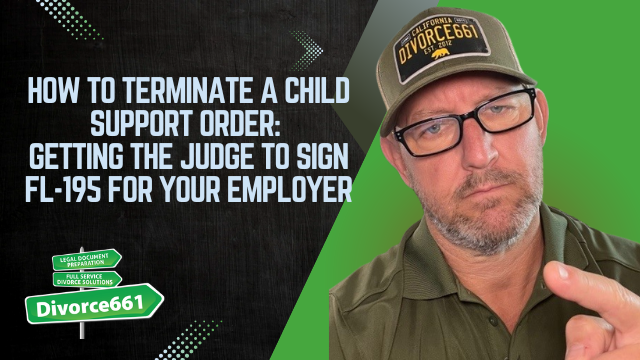How to Enforce Child Support Orders in California — Practical Steps to Get the Support Your Child Deserves
Hi, I’m Tim Blankenship of Divorce661. If you’re dealing with unpaid child support in California, you’re not alone. In a recent video I made, I explained the legal tools available to enforce a child support order and shared a real-life example of how enforcement turned months of non-payment into steady income for a family. This article expands on those ideas so you can understand your options and take effective action.
Why enforcement matters
When an obligor stops paying child support, it threatens your child’s financial security and stability. A court order is legally binding, but orders don’t enforce themselves. The good news: California provides several enforcement mechanisms designed to compel payment and protect your child’s rights.
Common enforcement tools in California
Here are the primary tools the court and child support agencies can use to collect overdue support:
- Filing an enforcement request with the court — This is often the first step. Filing initiates legal proceedings to recover unpaid support and allows the court to issue enforcement remedies.
- Wage garnishment (wage assignment) — The court can order automatic deductions from the payer’s paycheck so support is paid regularly and directly to the custodial parent or the state child support agency.
- Liens on property — Placing a lien on real property or other assets can prevent the obligor from selling or refinancing until arrears are paid.
- Suspension of licenses — Driver’s licenses, professional licenses, and other privileges may be suspended to pressure payment.
- Accruing interest — Unpaid child support often accrues interest, which increases the total amount owed and encourages prompt collection.
How the process typically works
- Review your child support order. Confirm the terms, amounts, and any modifications that may affect enforcement.
- Gather documentation. Prepare proof of missed payments, the court order, income information for the obligor (if available), and any communication records about payment attempts.
- File enforcement paperwork. Submitting a formal request to the court starts enforcement. Proper paperwork and correct filing are critical to avoid delays.
- Request specific remedies. Ask the court for a wage assignment, property lien, license suspension, or other appropriate tools based on the situation.
- Coordinate with local agencies. County child support agencies can assist with administrative enforcement, collections, and federal enforcement tools if needed.
Real example: enforcement that worked
“We helped a parent who hadn’t received support for over 6 months. We filed the enforcement request, the court issued a wage assignment, and payments started flowing again—reliably and on time.”
This illustrates how a timely enforcement request and a wage garnishment can quickly restore regular payments and bring financial stability back to a household.
When to get professional help
Enforcement involves preparation, correct forms, and coordination with courts and agencies. If you’re unsure how to proceed, professional legal document preparation and filing help can speed the process and increase your chance of success. Services like Divorce661 offer flat-fee document preparation, court filing assistance, and coordination with local child support agencies so the paperwork is filed quickly and accurately.
Practical tips to move forward
- Act promptly — the longer arrears accumulate, the harder recovery can become (and interest may grow the balance).
- Keep records — document missed payments, communications, and any agreements.
- Ask for a wage assignment — it’s one of the most reliable ways to get consistent payments.
- Consider agency assistance — your county child support agency can offer enforcement support and federal tools.
- Seek help with paperwork — accurate filings reduce delays and increase the likelihood of immediate remedies.
Conclusion — protect your child’s financial future
If your ex has stopped paying child support in California, you have legal options. Filing an enforcement request, requesting wage garnishment, placing liens, or seeking license suspensions are effective tools to compel payment. With the right approach and professional help when needed, you can secure the support your child is entitled to and restore financial stability.
Need help getting started? Visit Divorce661.com for a free consultation and assistance with enforcement paperwork and coordination with local child support agencies. You don’t have to navigate this alone; take steps today to protect your child’s rights and future.


